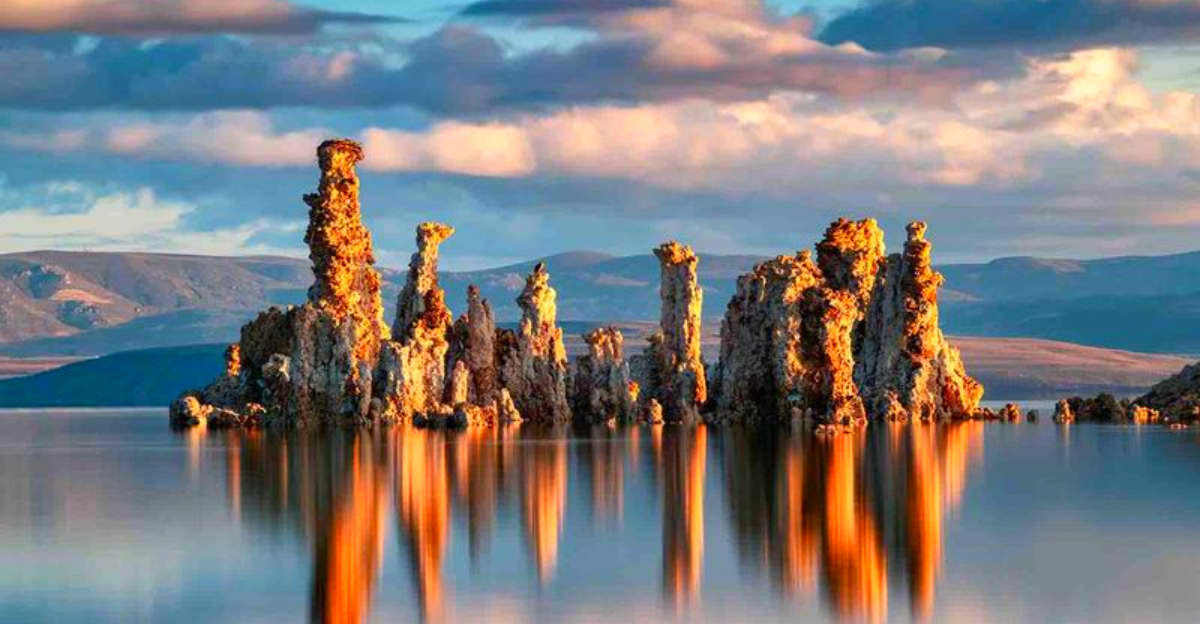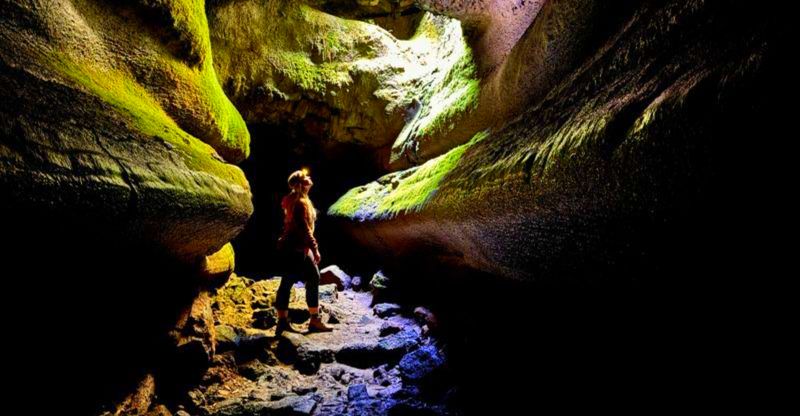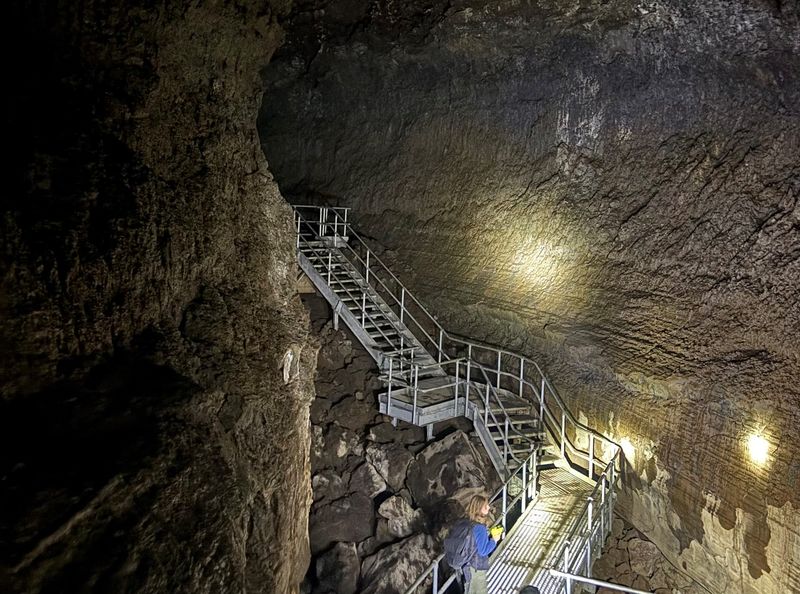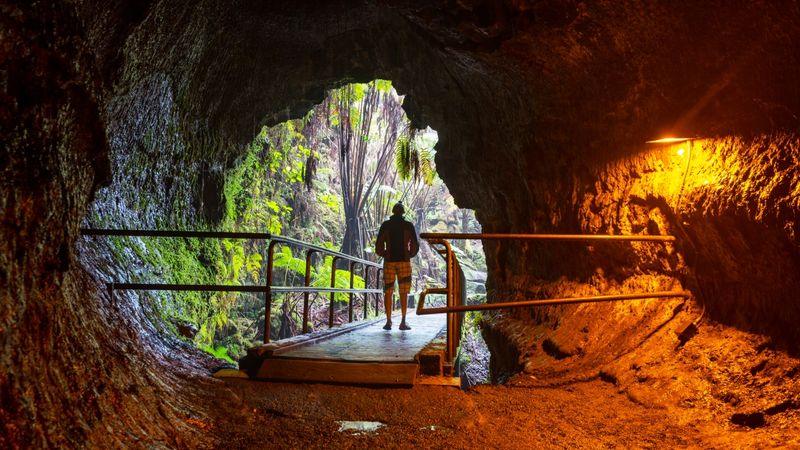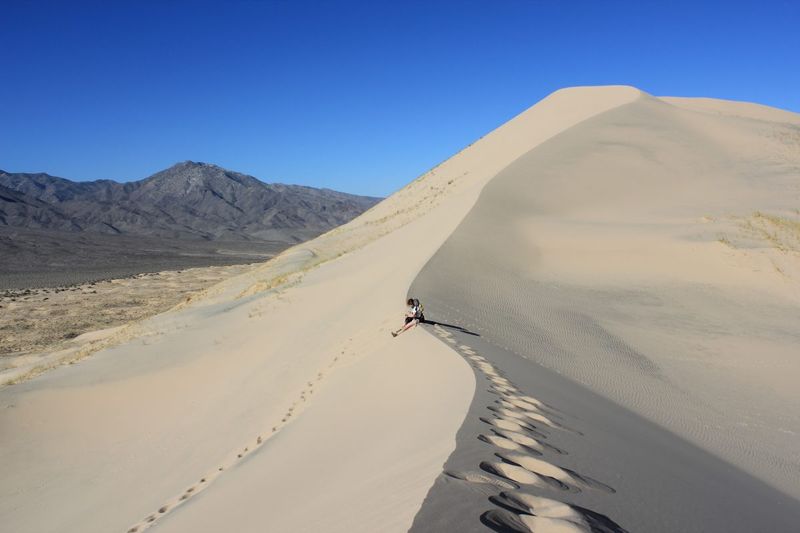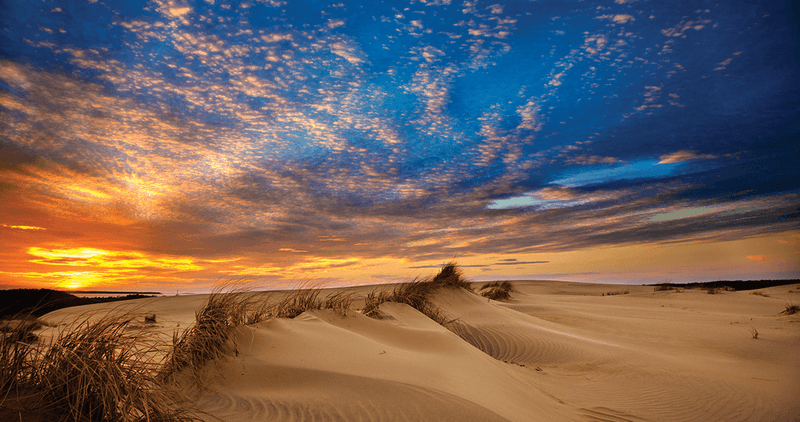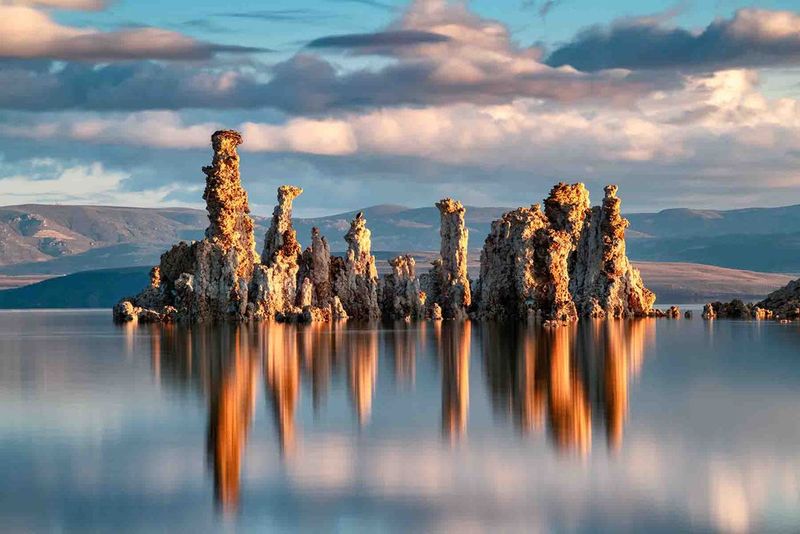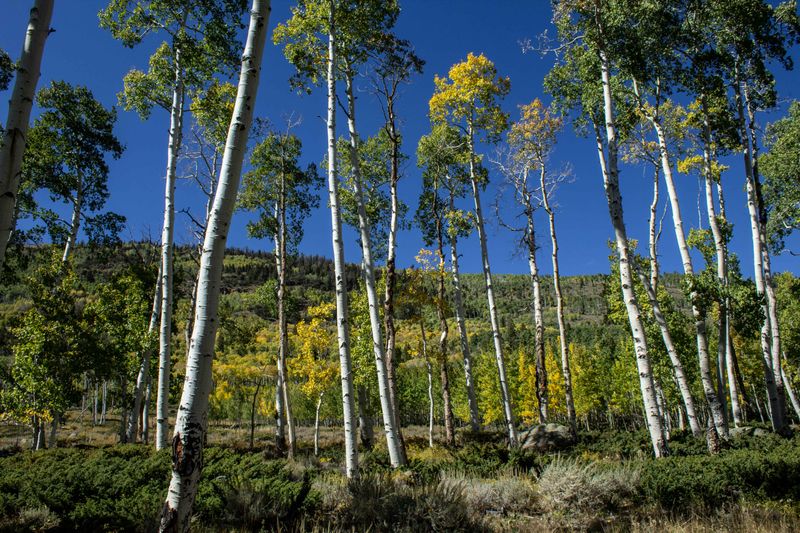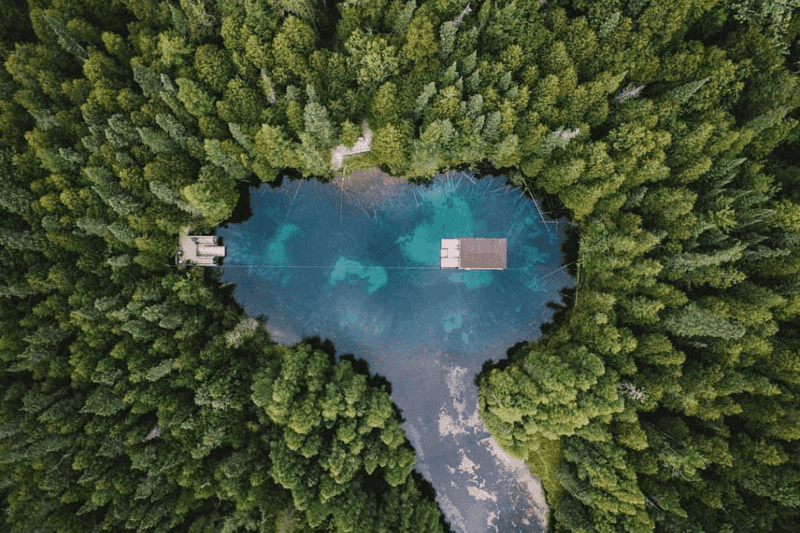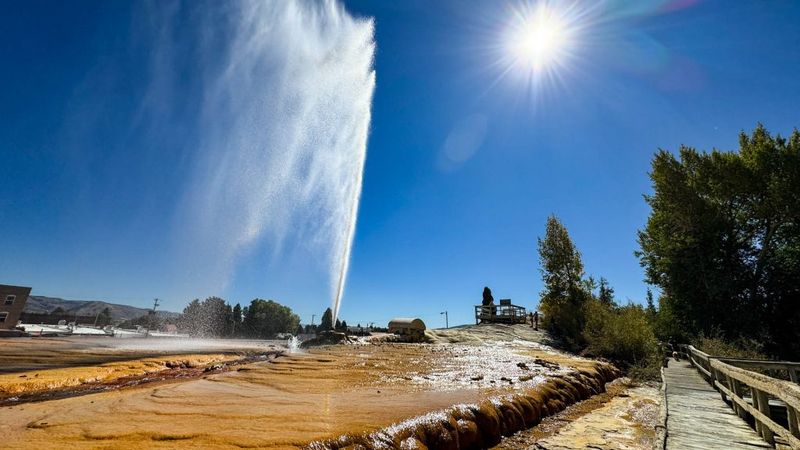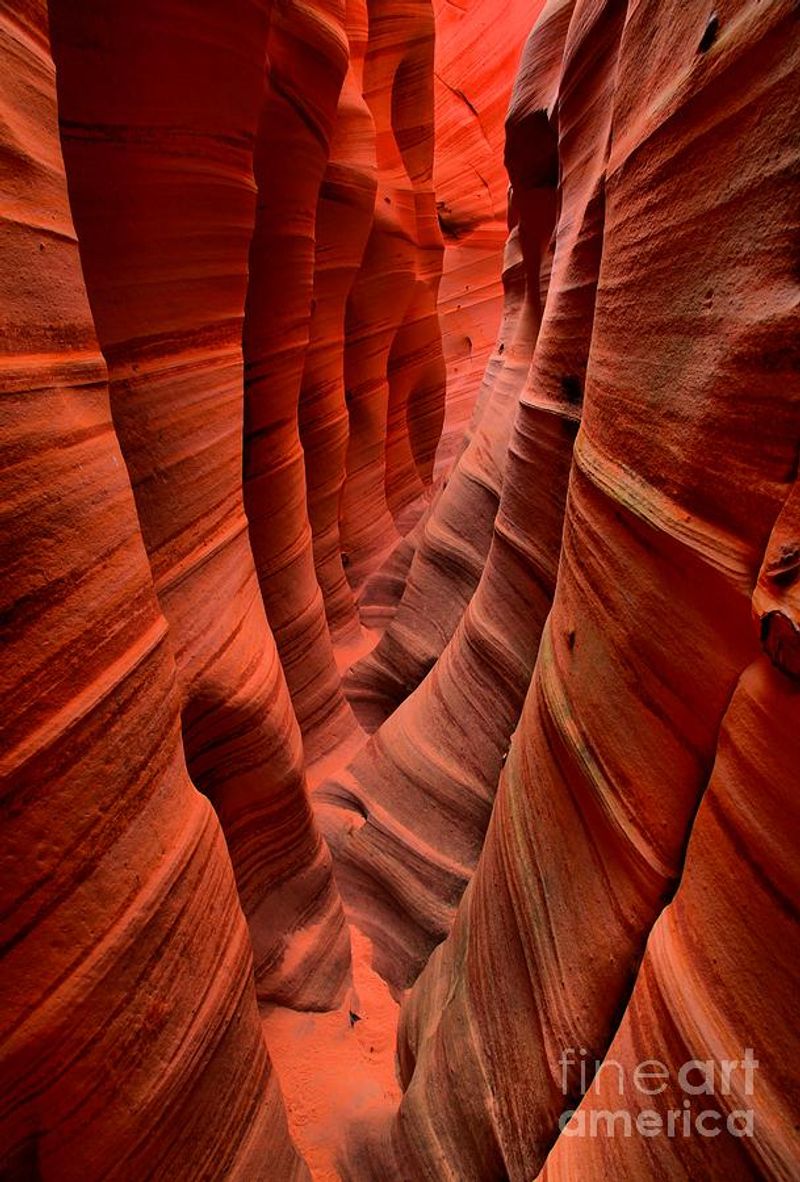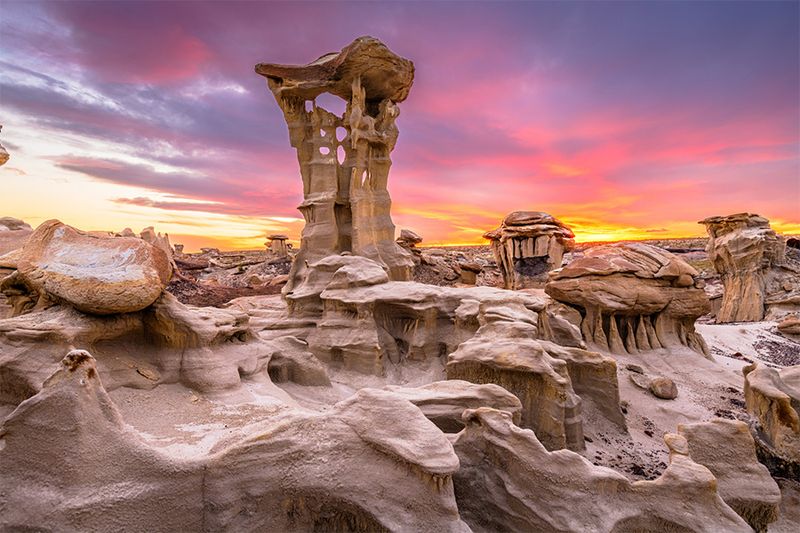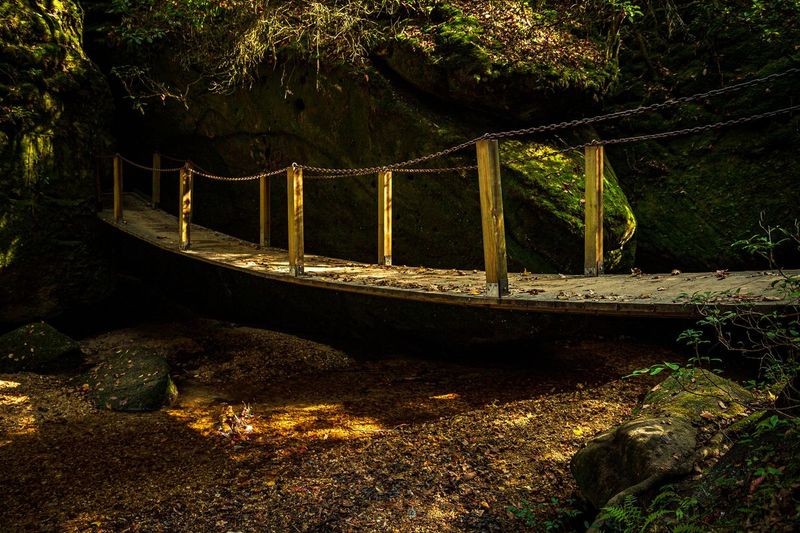Most travelers flock to the same famous landmarks, but America hides incredible natural wonders that few people know about. From underground caves carved by molten rock to sand dunes that actually sing, these secret spots offer adventures you won’t find in typical guidebooks. Get ready to discover twelve jaw-dropping places that will make you see the country in a whole new way.
1. Ape Cave Lava Tube — Washington (Mount St. Helens)
Deep beneath Mount St. Helens lies a pitch-black world frozen in time. Ape Cave stretches for roughly 2.5 miles, making it the third-longest lava tube in all of North America. Thousands of years ago, rivers of molten rock carved these tunnels, leaving behind smooth basalt walls that feel like walking through a dragon’s lair.
Two routes let you pick your adventure—the Lower Cave offers an easier stroll, while the Upper Cave challenges you with boulders and steep climbs. You’ll need timed reservations between May and October through Recreation.gov, booking a two-hour window to explore. Don’t forget to bring your own flashlights or headlamps since there’s no equipment rental on-site.
Bundle up like it’s January, even if you visit in summer. The cave stays at a chilly 42°F year-round, so jackets and layers are essential for staying comfortable underground.
2. Lava River Cave — Oregon (Bend)
Newberry Volcano left behind an amazing gift—a mile-long tunnel you can walk right through. Lava River Cave takes you on an underground journey where ancient lava once flowed like a river, creating smooth channels and dramatic rock formations. Rangers are often present to answer questions and share fascinating geology facts.
Planning ahead is crucial since the cave only opens from mid-May through mid-September. The reservation system releases half the tickets seven days in advance and saves the other half for last-minute adventurers 24 hours before each day. Six daily entry blocks keep crowds manageable, but weekends fill up fast.
Stair access makes entry easier than many wild caves, though you’ll still need warm clothing and reliable lighting. The constant cool temperature inside provides welcome relief from Oregon’s hot summer days above ground.
3. Nāhuku (Thurston Lava Tube) — Hawaiʻi Volcanoes National Park, Hawaiʻi Island
Step into a 500-year-old tunnel where lava once roared at temperatures topping 2,000°F. Nāhuku sits nestled within vibrant rainforest, creating a surreal contrast between the dark volcanic rock and bright green ferns draping overhead. The easy loop trail makes this one of Hawaii’s most accessible underground wonders.
Located conveniently near Crater Rim Drive, the short walk suits visitors of all fitness levels. Always check the park website before heading out, as volcanic activity or weather can occasionally trigger temporary closures. The trail remains well-maintained and clearly marked throughout the year.
Early morning or late afternoon visits reward you with enchanting bird songs echoing through the tube and significantly fewer tourists. The acoustics inside amplify nature’s soundtrack, making quiet times especially magical for photography and peaceful reflection.
4. Kelso Dunes (Booming “Living” Dunes) — Mojave National Preserve, California
Imagine sand that actually sings to you. Kelso Dunes tower above the Mojave Desert, and under perfect conditions, they produce a deep, mysterious boom that sounds almost otherworldly. This rare phenomenon happens when avalanching sand grains vibrate at just the right frequency, creating resonant tones you can feel in your chest.
Free year-round access makes this natural wonder available whenever you’re ready to explore. The unmarked trail covers roughly three miles round-trip, climbing soft sand to reach the ridge where the best booming occurs. Navigation is straightforward since you can see your destination from the parking area.
Warm, dry days offer the best chance to hear the dunes sing. Slide down a steep lee face to trigger the booming—it’s part science experiment, part playground, and completely unforgettable.
5. Jockey’s Ridge State Park (Tallest Active Dune on the Atlantic) — Nags Head, North Carolina
The Atlantic coast’s tallest living dune system shifts and reshapes itself daily, sculpted by relentless coastal winds. Jockey’s Ridge has become legendary among hang-gliding enthusiasts who launch from its peaks, soaring above the Outer Banks like modern-day Icaruses. Sunset here transforms the sand into waves of gold and amber.
Trails wind through the constantly changing landscape, and park access remains open year-round for exploration. Check the state park website for current hours and ranger-led programs that teach about dune ecology and local history. The visitor center offers helpful maps and educational displays.
Golden hour photography opportunities are spectacular, but stick around afterward as winds typically calm down. Kite flying becomes absolutely magical during these peaceful evening hours when the air settles and the sky glows with fading colors.
6. Mono Lake South Tufa — Lee Vining, California
Alien-looking limestone spires rise from Mono Lake’s alkaline waters like something from another planet. These tufa towers formed where calcium-rich freshwater springs met the lake’s mineral-heavy water, creating dramatic calcium carbonate sculptures over centuries. Walking among them feels like exploring an ancient underwater city now exposed to air.
A May wildfire caused some damage to boardwalks and signage in 2025, so expect ongoing repairs at certain access points. The reserve remains open, and seasonal South Tufa tours continue operating for visitors wanting guided experiences. The main viewing areas are still accessible and spectacular.
Sunrise bathes the white tufa formations in soft pink light, creating photographer’s paradise. Bring a telephoto lens for capturing migratory birds—Mono Lake serves as a crucial stopover where millions of birds refuel during their long journeys.
7. Pando, “The Trembling Giant” — Fishlake National Forest, Utah
What looks like a forest is actually one single organism. Pando consists of roughly 47,000 aspen stems all sharing the same root system, spanning over 100 acres and weighing millions of pounds. Scientists believe this clonal colony has survived for thousands of years, making it one of Earth’s oldest and largest living things.
You can view this natural marvel right from Highway 25 near Fish Lake, with convenient roadside pullouts and interpretive signs explaining the science. Friends of Pando partners with the Forest Service to coordinate stewardship efforts and provide visitor information. The grove is easily accessible without requiring strenuous hiking.
Late September through early October delivers peak fall color when the entire grove transforms into gold simultaneously. Since all the stems share genetics, they respond to seasonal changes in perfect unison, creating a breathtaking golden spectacle.
8. Kitch-iti-kipi (“The Big Spring”) — Palms Book State Park, Michigan
Michigan’s largest natural spring gushes over 10,000 gallons of crystal-clear water every minute from limestone depths. The emerald pool reaches about 40 feet deep, yet you can see every detail of the bottom—ancient logs encrusted with minerals, bubbling sand, and trout gliding through the turquoise water. A self-propelled observation raft lets you float directly over this aquatic window.
The park opens daily from 8 a.m. until dusk, with the raft ride included in your park entry fee. You’ll need either a Michigan Recreation Passport or a day pass to access Palms Book State Park. The raft system is simple—visitors pull themselves across using a sturdy cable.
Calm mornings offer mirror-like water surfaces that perfectly reflect the surrounding forest and underwater scenery. The stillness creates doubled beauty and makes for stunning photographs of this hidden gem.
9. Soda Springs “Captive” Geyser — Soda Springs, Idaho
In 1937, workers drilling for a swimming pool accidentally tapped into something extraordinary—a carbonated geyser that shoots water skyward like a giant soda bottle. Unlike thermal geysers in Yellowstone, this one erupts thanks to underground carbon dioxide pressure. City officials installed a valve to control timing, so it now erupts reliably every hour, sometimes reaching 100 feet high.
After a summer mechanical problem, the city got the geyser working again as of September 16, 2025. Always double-check current status if you’re making a special trip, since maintenance issues can occasionally interrupt the show. When operating normally, it’s the only timed geyser of its kind anywhere.
Arrive a few minutes before the hour to claim a good viewing spot. Eruptions last several minutes, and an easy boardwalk provides comfortable access for watching this bubbly spectacle unfold against Idaho’s mountain backdrop.
10. Zebra Slot Canyon — Grand Staircase–Escalante, Utah
Pink and white sandstone stripes undulate along narrow canyon walls, creating patterns that inspired the name Zebra Slot. This photogenic squeeze challenges adventurers with tight passages that sometimes require turning sideways or passing gear hand-to-hand. The short but intense route rewards you with some of Utah’s most striking slot canyon photography.
No permit is required, and the round-trip distance ranges from five to 6.6 miles depending on which route you choose. Always check flash-flood forecasts before entering—slot canyons become deadly traps during storms. Expect occasional standing water and sections where only one person can pass at a time.
Pack light since bulky backpacks won’t fit through the narrowest sections. Many hikers leave non-essential gear at the slot entrance or pass packs ahead separately to navigate the tightest squeezes successfully.
11. Bisti/De-Na-Zin Wilderness (Bistahí) — Four Corners, New Mexico
Step into a landscape that seems designed by an alien artist. Bisti Wilderness spreads across the Four Corners region with bizarre hoodoos, chunks of petrified wood, and delicate “eggshell” formations weathered into impossible shapes. The badlands offer free, year-round hiking through scenery that looks more like Mars than Earth.
Small groups don’t need permits, though larger parties should check current regulations. Vault toilets mark the main trailheads, but facilities are otherwise primitive and remote. Most routes involve cross-country navigation rather than marked trails, so bring GPS, plenty of water, and serious sun protection.
Starting before dawn lets you catch alpenglow painting the hoodoos in warm orange light while temperatures remain comfortable. The desert heat builds quickly, so early hiking makes the experience far more enjoyable and safer for extended exploration.
12. Dismals Canyon (Glow-worm “Dismalites”) — Phil Campbell, Alabama
Tiny blue-green lights twinkle in the darkness like fallen stars clinging to canyon walls. Dismals Canyon hosts rare bioluminescent larvae nicknamed “dismalites” that glow to attract prey in the damp, sheltered environment. This privately managed National Natural Landmark offers magical Dismalite Night Tours during spring and fall when the larvae are most active.
Register at the Country Store to access the property, and book night tours well in advance since they’re seasonal and limited. Daytime hikes along the canyon floor loop are available most of the year, showcasing waterfalls, rock formations, and unique biodiversity. The canyon maintains a cool microclimate even during Alabama’s hot summers.
Wear dark clothing to help your eyes adjust to the darkness, and use red-filtered lights to preserve night vision without disturbing the glowworms. Regular flashlights can interfere with the larvae’s bioluminescence and ruin the enchanting experience.
